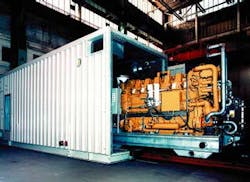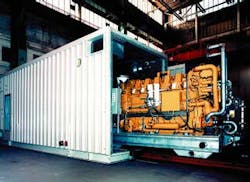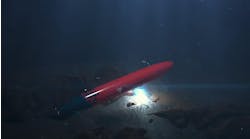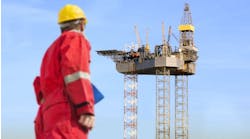Optimized power systems save weight, money on offshore installations
Stålmonteringer AB Stålab designs and builds generating sets (gensets), components and complete modules, as well as prefabricated buildings for the power industry and engine manufacturers. The company specializes in container design, while the process design for gensets is from Wårtsila. Volvo Aero Land and Marine handles the gas turbine system.
Using Stålab's expertise, it is possible to create an optimized power system for any offshore platform. In most installations, process machinery is started with power from diesel generating sets. Once, the rotating equipment reaches optimal speed, the power load is shifted to gas turbine gensets to sustain the process equipment at optimal levels.
In a study of Esso Norge's Ringhorne platform, significant savings were identified. By optimizing the power needs of the platform for basic, start, peak, and emergency systems, the operator could reduce platform weight by 40-50 tons at a saving of NKr 40-50 million. This shows that by thinking about the needs of the platform by function, rather than just by equipment, an operating company can save significant resources for use elsewhere in the development project.
For the offshore oil and gas industry, the company also fabricates lightweight diesel oil tanks using stainless or carbon steel. For both genset housings and tanks, the steel is corrugated to save weight and add structural rigidity. Corrugation allows thinner steel to be used, which saves material, and reduces weight by half over a standard tank, without sacrificing either strength or rigidity.
Split package design
Genset module construction is split into two parts. The complete genset housing is fabricated as an upper housing and lower frame section before mating into the completed unit. This modular approach adds flexibility in both design and manufacture of associated subsystems.
Fixed equipment, such as air and exhaust intakes, fuel lines, assorted piping, and firefighting equipment, are installed before final module assembly. In addition, fuel tanks, air handling systems (to lower noise to 85 dBA), and an air conditioned control room are added to the lower frame. Lastly, the separate halves are mated, then all connections are completed and tested before delivery of the genset to the customer.
Veslefrikk expansion
Stålab recently installed two genset projects for Statoil's Huldra Field. This satellite field required an on-demand power system controlled from Veslefrikk, the tieback platform. The system used Caterpillar engines and generators on a frame and housing constructed by Stalab.
Other projects include a diesel genset for the FPSOBerge Hus owned by Bergesen. The completed package measured 17.7 meters long by 5.4 meters wide by 6.1 meters high, and included a 16-meter exhaust stack and silencer. The dual-fuel engine can run on either diesel or natural gas and produces 6.5 MW of power for the electrical needs of the FPSO.
Other projects in the works include gensets for the FPSOSandia and a large order of 10 gensets from Petrobras. Each project is unique and Stalab uses its expertise to adjust and modify the designs to fit the special needs of each project.
For more information, contact Kenth Ekstrand, Stålmonteringer AB Stålab. Tel: +46 (0)520 47 41 00, Fax: +46 (0)520 47 41 99, E-mail: [email protected].




